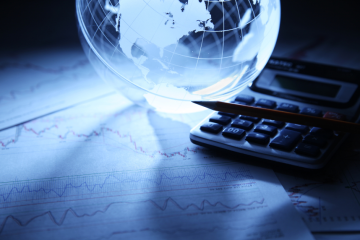
As COVID vaccination rates increase, many organizations are beginning their 2022 planning. What to expect in the US economy next year is on many minds as the assumptions for the upcoming year raise considerable uncertainty. We have reviewed several economic forecasts and data reports to compile guidelines for planning. While they are not guaranteed, there is a consensus among forecasting reports and published opinions from respected sources. We also must be mindful of the societal changes occurring because of COVID.
Here are major data points to think about:
- True inflation rates hitting US consumers in 2021 are 5%–6% when the cost of household goods is fully tallied. The Fed leaves out gasoline and volatile food price changes in their calculations, but consumers cannot when they buy. Estimates for inflation in 2022 vary between 4%–5%, with a gradual taper in 2023. The Fed is not expected to take any major actions other than the tapering that has already been announced.
- The current prime rate of 3.25% will likely rise modestly next year. Estimates of the rise run between 50–100 basis points, which still leaves interest rates low. Banks are not expected to make restrictive changes to their lending practices.
- Consensus GDP growth in 2021 is 4.5%–6% and that rate is expected to halve in 2022. No major sources are projecting a recession in the next 36 months. GDP growth for the second half of 2022 is expected to slow slightly.
- The tight supply chain is expected to remain through the first half of 2022. Companies need to change their “just-in-time” inventory management to “just-in-case.” Having well thought out “plan B procurement” is a must, especially if the majority of inventory is sourced from Asia. Much of Asia is dealing with many more COVID issues than the US.
- The employment market will remain tight for the foreseeable future. Demographic changes are driving that, with retirements up and many workers not returning post-pandemic. Over 2 million women have not returned to pre-pandemic employment levels. Likely, it will take longer for those numbers to adjust. Wage increases will not attract as many workers as are needed if they are not in the labor pool.
- Consumer spending is expected to grow 5%–6% in 2022, but business capital investment will not grow as much. Much of that growth will be in services, where inventory is not an issue. In some industries, it will be the lack of workers that reduces growth. There is a great deal of cash available, but if equipment is hard to get and employees hard to find, capital spending will be constrained.
- The US dollar should continue its rise compared to other currencies, as the US economy is expected to outperform most of the rest of the world, with the major exception being China.
In summary, 2022 does not look much different from 2021 except that there will be a continuing trend towards normalcy in markets. Inflation is not short-term transitory, and the supply chain has yet to pass all of their cost increases to the end consumer. We recommend having a detailed plan B for 2022 just in case there is more pandemic or political disruption.
C Squared Solutions provides interim or fractional CFOs, COOs, and CEO advisors in nearly all industries. Through sophisticated modeling and experienced management, we frequently analyze and advise organizations on how to use economic forecasts in their planning. Give us a call and we can offer more information and details. Reach out soon before your employees seek more attractive jobs. The current employee quit rate is 2.7%, an all-time high.


